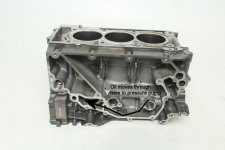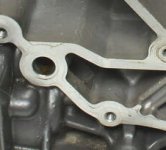IdahoMtnSpyder
Well-known member
The answer may be here. This is a paragraph from the 2014 service manual in the lubrication chapter in the description of the oil pressure circuit. As you can see the wording is fouled up so I'm not sure what exactly the writer is trying to say. Is he saying the valve allows or prevents oil from draining from the tank into the engine? If someone has a service manual for a later model take a look and see if the wording is clearer.Why does the level in the (remote) sump change? For the time being, let's ignore any volume difference due to temperature. The level of oil in the sump <should> still be "the level of oil in the sump" when you check it an hour, a day, even a week later. Right? If not, where does it leak out?

This is the only route that I can discern from the manual that would allow oil to drain back into the crankcase from the reservoir.


